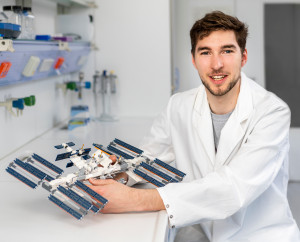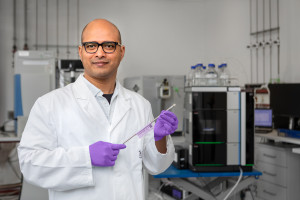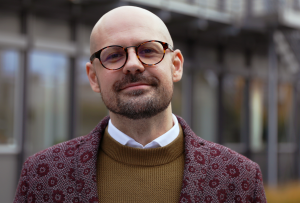Dortmund, 24th September 2021
Thibaut Vignane (24) from Lyon in France has been working as a PhD student in the ERC group Sulfaging since October 2020. Before the biologist came to Dortmund, he studied at the University of Bordeaux. His dissertation deals with the role of the so-called protein persulfidation in ageing processes. Vignane’s goal is to shed light on the molecular mechanisms by which persulfidation controls the ageing of human cells. In the interview, he explains what this has to do with space travel.
How did you first become interested in your research area?
Vignane: During my bachelor studies, I did an internship with Dr Milos Filipović. That’s how I discovered the hydrogen sulfide and persulfidation field. At the same time, I also got really interested in genetics. I was very happy when Dr. Filipović offered me an opportunity to combine my then newly discovered passion for genetics with the field of H2S, as we call hydrogen sulfide, and ageing. That’s how I came to write my master’s thesis on this topic.
What are you particularly keen on finding out?
Vignane: I’m generally interested in molecular biology and in understanding the mechanisms through which cells can regulate their functions. However, learning more about the specific mechanisms of ageing on the molecular level is something that interests me in particular. Since ageing is a mix of very complex and interconnected mechanisms, studying it is very challenging – but that’s what additionally fuels my interest.
What is the topic of your work at ISAS?
Vignane: As the ageing field is very large, I’m focussing my research on two aspects right now: The first one is related to the change of persulfidation levels during ageing. Persulfidation is the posttranslational modification of the cysteine residue, which has been shown to play a role in ageing. The second aspect is to assess the role of the protein persulfidation on the telomere attrition process which occurs during ageing.
Are there animal experiments involved in your research?
Vignane: We work with rats and mice, albeit in collaboration with other working groups. We’re currently studying changes in persulfidome in the ageing brains of mice. In addition to mice, I also work with Caenor-habditis elegans, a worm that is widely used to study ageing. Due to its relatively short life, it’s the perfect model organism for our analyses.
What do you hope to accomplish with the results?
Vignane: The knowledge gained could lead to a huge advancement in many fields, because it could help cure some rare diseases. In my opinion, rare diseases are as important as common diseases for which more research is being conducted. Right now, our group is working on a very rare disease called Werner Syndrome (WS). WS is the most common of the premature ageing disorders. We believe that H2S might play an important role in the treatment of this accelerated ageing disease. My greatest wish is that my research will enable a better understanding of how H2S controls the sleep-like state in our body. One day, I’d like to help induce the hibernation of the human body with my research and fulfil the dream of space travel for recreational purposes.
(Pauline Jürgens)

Thibaut Vignane did not yet get as close to the International Space station as he does in this photo. However, his research brings him closer to achieving his dream of putting humans into a state of hibernation.
© ISAS








